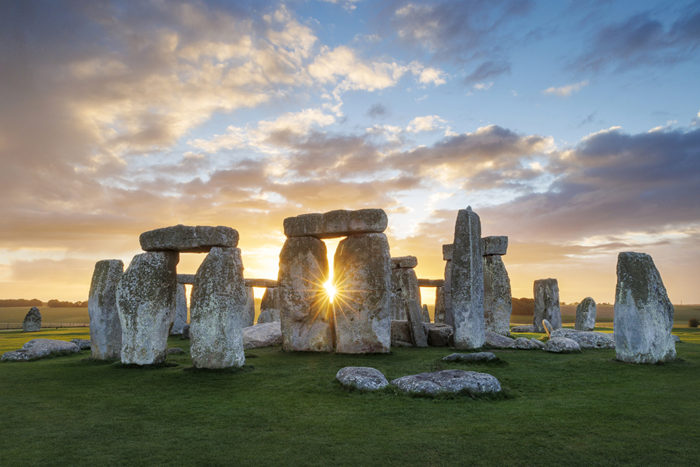Stonehenge photos: Jeremy Flint visits Stonehenge and meets its custodians
Photojournalist Jeremy Flint travels to Wiltshire to meet the guardians of one of Britain’s most iconic landmarks: Stonehenge.
Stonehenge history
Stonehenge is the ultimate symbol of prehistoric achievement and one of the world’s most famous monuments. Located on Salisbury Plain in Wiltshire, it is one of the past’s most enduring mysteries, with historians and archaeologists puzzling over the purpose of the stones for centuries.
While there is strong archaeological evidence that Stonehenge was used as a burial ground, most modern scholars believe it also served either as a ceremonial site, a religious pilgrimage destination, a final resting place for royalty, or a memorial erected to honour and perhaps spiritually connect with distant ancestors.
Built in the late Neolithic period, around 2500 BC, the origin and construction of the circular henge are equally perplexing. The larger sarsen sandstone slabs of its outer ring are topped by connected horizontal lintel stones and are likely to have come from the nearby Marlborough Downs.
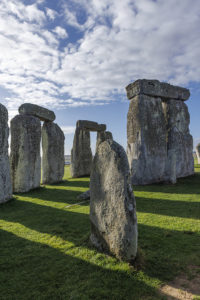
The smaller bluestones of the inner ring have been traced to the Preseli Hills in Wales, 200 miles away, and are thought to have had a special meaning to the Stonehenge builders or even hold magical properties. Inside these circles are free-standing trilithons – structures made up of two bulkier vertical sarsens joined by a lintel.
The stones are a masterpiece of physical engineering and are thought to have been transported with the help of sledges and ropes and raised by up to 100 people per stone. Shaped using stone tools such as hammerstones, the stones were joined together using woodworking techniques including mortise and tenon, and tongue-and-groove joints to slot them into place.

Owned by the Crown and managed by English Heritage, this fascinating ruin has been a legally protected Scheduled Ancient Monument since 1882. Today, it is preserved by a dedicated team of staff and volunteers who ultimately help safeguard the future of Stonehenge’s heritage: the guardians of England’s most majestic monument, and I travelled to Wiltshire to meet them.
Stonehenge is one of more than 400 historic sites and monuments across England that are protected by English Heritage and open for the public to visit under a licence from Historic England.

Heather Sebire, Curator of Stonehenge, oversees the monument’s conservation and management. She says: “As guardians, our main goal is to protect the stones for the next generations. It is a big responsibility as there are many levels of protection. I make sure that everything that happens with visitors and events has a limited impact on the archaeology of the site. This includes improving the circulation so people can walk around year-round. I also schedule [the] upkeep of conserving the stones with volunteers to preserve the integrity of the place.”
Together with the stone circle at Avebury, Stonehenge and its surrounding monumental landscape has been a certified World Heritage Site since 1986, and part of Heather’s role is to sustain the site as a restful conservation area and report its condition to UNESCO every year, to retain its World Heritage status.
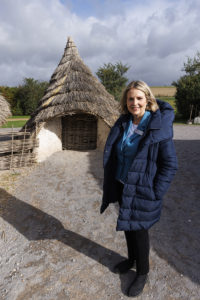
Heather loves being outdoors and on-site and does a regular stone check. As Stonehenge sits in a grass and chalkland landscape and is affected by the weather, Heather inspects it for signs of erosion and records the state of the stones and lichens, which are all legally protected.
“Some historical people have left their mark on Stonehenge, including Sir Christopher Wren, the famous 17th-century architect”, she says. Wren’s name has been skilfully chiselled into one of the 25-tonne sarsens. Nichola Tasker, Stonehenge Director, oversees the 200 members of staff who work on the site throughout the year. “I have a balanced role between providing access to 10,000 daily visitors during July and August and nearly 1 million people annually, whilst preserving and maintaining the landscape” she says. “I feel honoured to help create memories of the best days of people’s lives.”

Sue Martindale, Volunteer Manager, looks after the enthusiastic and knowledgeable group of volunteers who tend to the landscape and carry out conservation work, such as weeding and cutting the grass around the stones.
As custodians of the land, the volunteers have guardianship of Stonehenge and feel empowered to protect the monument. “I have been here almost nine years and protecting the stones is something we take very seriously,” Sue says. “I like to think that what we do has contributed to people being able to see the site for many years to come. We are always looking for new volunteers”.
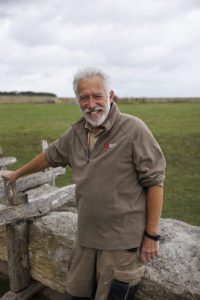
The volunteers do a great job of looking after the place and tell the site’s story through workshops, including bronze casting, pottery, and basket weaving. David Price volunteers at Stonehenge to keep his mind active after retiring and to give something back to the community. He says: “As a volunteer I get a real buzz from welcoming people from all around the world and helping them to reflect on the history of the human population as seen through the lens of our most iconic and unique monument. Stonehenge has a mystique of its own and I feel so lucky to be able to help share its story with visitors.”
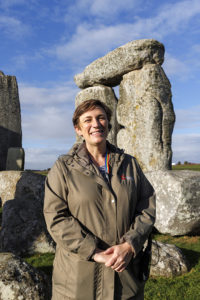
Other guardians include Julia Richardson, Deputy Operations Manager, who does a final check of the stones each morning before visitors arrive, and supervises the stewards. There are also security gatekeepers in place 24/7 to ensure the stones are safe and that the rules, such as not touching or walking over the stones, are upheld.

And what is it like working in such a spiritual place, which has been a main religious site for both Druids and Pagan groups? “You can’t help feel a sense of awe and protection when standing inside the stone circle,”
Nichola tells me. There is certainly something special about the stones. “You can’t help but feel the history of this huge monument, where very little has changed,” Julia says, “You get a real sense of connection to the people who have come before, including those who built and used it and the layers of visitors over time. There is almost a tangible link to the past, and a special sense of mystery and wonder.”
The monument is a powerful testament to human ingenuity, imagination, and creativity. “We are constantly discovering new things about Stonehenge – very often thanks to new scientific techniques” says Scott Ashman, Head of Historic Properties for Stonehenge.
The visitor centre and exhibition tell you more about the site’s evolution. For instance, Sue tells me how in the late 1950s a core sample was taken from the stones by one of the engineers working on the restoration of the site.


“He took the core home, and later moved to Florida”, she says. “A few years ago, we were contacted by his family to ask if we’d like it back; this provided us with a sample of sarsen stone that could be analysed, and we now know exactly where it came from – a question we were frequently asked but couldn’t answer.”
Nichola reveals another fact: “Stonehenge was taken over by the military during the First World War, where military drills were performed on the Salisbury Plains and the RAF took some of the earliest aerial photos.”
The best time to visit the stones, according to Scott, is outside the school holidays when its quieter – the only day Stonehenge is closed each year is on Christmas Day.
Another great time to visit Britain’s iconic landmark is during the solstices and equinoxes – watching the sun set behind the tallest trilithon during the winter solstice is said to be breath-taking. Whenever you visit, you are bound to be swept away by the atmosphere of it all, and it’s thanks to these guardians that we can still experience it – and hopefully generations after us will marvel at it and wonder, just like us, how and why was it built?
To find out more and to plan a visit to the stones go to
www.english-heritage.org.uk/visit/places/stonehenge/
Travel Notes
Where to stay
The Farm at Avebury
Embed yourself in this ancient landscape with a stay in one
of six luxury self-catering homes in Avebury, which forms part of the World Heritage Site. Centred around an attractive communal courtyard offering space to relax, each converted stable has its own cooking and dining facilities where you can sample some fantastic local produce, including fresh meat and dairy products. It’s an ideal base to explore other sites of interest in the region, such as Avebury, the world’s largest prehistoric stone circle, a mile away from the farm on the A4361; Old Sarum’s Iron Age Hillfort; and Woodhenge – an atmospheric Neolithic site close to Stonehenge.
thefarmatavebury.co.uk
Getting there
Stonehenge is clearly signposted from the A303, off the A360, in Wiltshire, and parking is available. There is also a hop-on hop-off bus from Salisbury train station, which is about 12 miles away.
www.english-heritage.org.uk/visit/places/stonehenge/plan-your-visit/directions/
Read more:
Exclusive: Meet the Household of the Real-Life Downton Abbey

